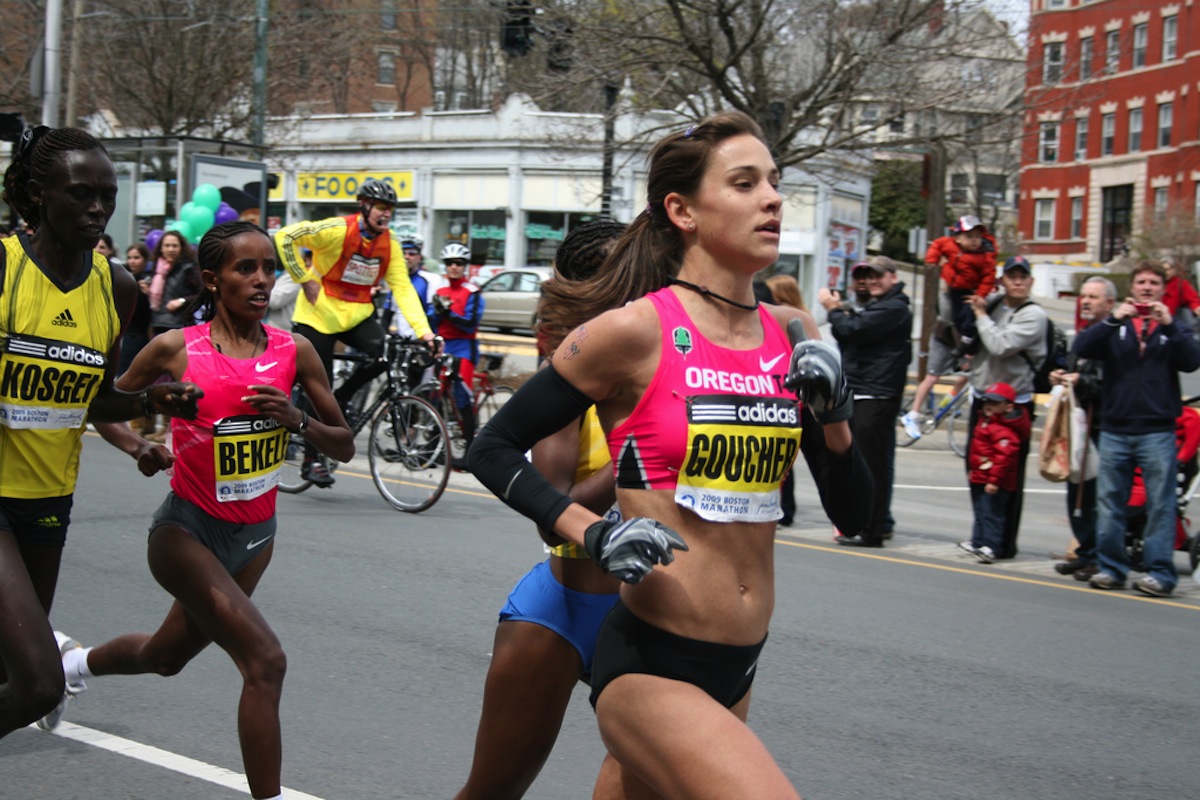Marathon Organizers Discuss Additional Security Measures for Race Day

Boston marathon photo uploaded by Stewart Dawson on Flickr
Banned bags and a route void of soldiers carrying their rucksacks are just the tip of the iceberg in terms of what will be different at this year’s Boston Marathon.
During a press conference on Monday morning, race organizers and police officials said additional “ambitious” security measures are being implemented to make sure the event is safe for attendees and participants come April 21. One of those details includes asking people who line the race route to keep personal items in clear, plastic bags, so things are in plain sight. “If you are coming to the marathon, please, please do not carry backpacks or over-the-shoulder bags…and please do not wear costumes or masks,” said Kurt Schwartz, Director of the Massachusetts Emergency Management Agency. “These simple guidelines will comfort people [at the marathon], particularly in crowded, dense areas, and will help ensure the safety of the event.”
Schwartz said there will be a significant increase in police officers and the safety plan in place, which includes pre-event planning with the FBI and Secret Service, will be much more “comprehensive” than in past years due to the bombings in 2013. He expects there will be upwards of 3,500 officers along the route, including more plain-clothes officers that will be specifically trained in spotting both suspicious people and activity.
Besides an increase in police officers and federal officials, Schwartz said, spectators approaching certain areas of the course may have to pass through screening checkpoints, where those carrying bulky items or backpacks may be asked to open their bags for inspection. People not carrying backpacks will pass through the screening check points without being checked, he said.
An increased camera presence will also be in play during this year’s marathon. “We are greatly enhancing efforts to actively monitor cameras and use information to respond to any type of suspicious conduct or behavior,” Schwartz said. Activity will be monitored in real-time, and security officials will be communicating based on activity captured on the cameras in all eight communities that the race route cuts through. State Police have had conversations with business along the route, too, so that they can have access to cameras on shops and stores.
It won’t just be up to the cameras to keep watch on what’s happening on race day. Officers also want visitors and attendees to be on the lookout for any suspicious activity. They stressed the “See Something, Say Something” mentality, and asked attendees to report anything that seems odd or out of the ordinary. “We are really focused on prevention. The best thing we can do is help prevent anything from happening,” said Schwartz.
The meeting on updates to this year’s race was held by the Boston Athletic Association, leaders from municipalities that line the Marathon route, the FBI, Secret Service, as well as officials from MEMA.
Last week, organizers released an initial list of changes that spectators and runners could expect to see on Marathon Monday, in the wake of the attack at the finish line last year, where two bombs killed three people and more than injured 260 others. On that list were bans on certain types of bags and signs, and new regulations for those making the 26.2-mile trek.
The security details also included a ban on cyclists and “ruck marchers” being on the course during race day, a tradition that has been carried out for both groups for years.
Schwartz said in the weeks leading up to the marathon, more conversation between police in all eight communities, as well as with the FBI and other federal agencies, will be held to fine-tune the security details for the race.

